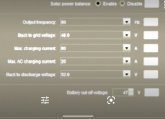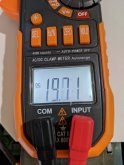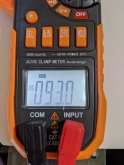jasonhc73
Cat herder, and dog toy tosser.
If you start at the first post in this entire thread, you will have listed out all the pieces you need to get at the wire connector.No, I don't have the ability to see individual cells...I bought the BYD in the big wheeled case with the BMS. The one will recently reviewed and then connected my same LV2424 to in another video shortly thereafter. This BMS cleary does something, but as far as I am aware, it doesn't give me a visual of what it is doing other than the sorta useless voltmeter on the box itself.
I have 3 of these for three separate LV2424 arrays:
I think this is what's inside:
BYD LFP 24V 5 kwh 200 Ah Battery Pack With BMS 130A LiFePO4
info@techdirectclub.comwww.techdirectclub.com

BYD LFP 8S BMS 24v LifePo4 130A with connection wiring for BYD Battery
info@techdirectclub.comwww.techdirectclub.com
The only monitoring I can do is through Watchpower, which I am grateful for and this guy (which hasn't been incredibly helpful yet):
Amazon.com: AiLi Battery Monitor Voltmeter Ammeter Voltage Current Meter 8-80V 0-100A Auto Car Motor Boat Caravan RV Motorhome: Home Audio & Theater
Buy AiLi Battery Monitor Voltmeter Ammeter Voltage Current Meter 8-80V 0-100A Auto Car Motor Boat Caravan RV Motorhome: Battery Testers - Amazon.com ✓ FREE DELIVERY possible on eligible purchaseswww.amazon.com
I can order the ISDT, but before I do I want to make sure it is not too impossible for me to actually connect it to my BYD. My batteries are not as accessible as yours because they are crammed into this box and closed up. I'm sure if I start tearing it down it won't go well and that I'll void whatever warranty I do have. I am thinking I should write Tech Direct and ask them if they can send me batteries that are balanced instead of whatever they sent me.
TE made a very nice connector that connects to their black box of a BMS.

BYD BMS
A no cut, no splice, plug-n-play. It has a screen, Bluetooth, and more settings in the app than we know what to do with. Will already reviewed this BMS. The Inside wires: The Outside Wires: Conclusion: Molex Micro-Fit 3.0 430251000 10POS 3mm Molex Micro-Fit 3.0 or 1729521001...










